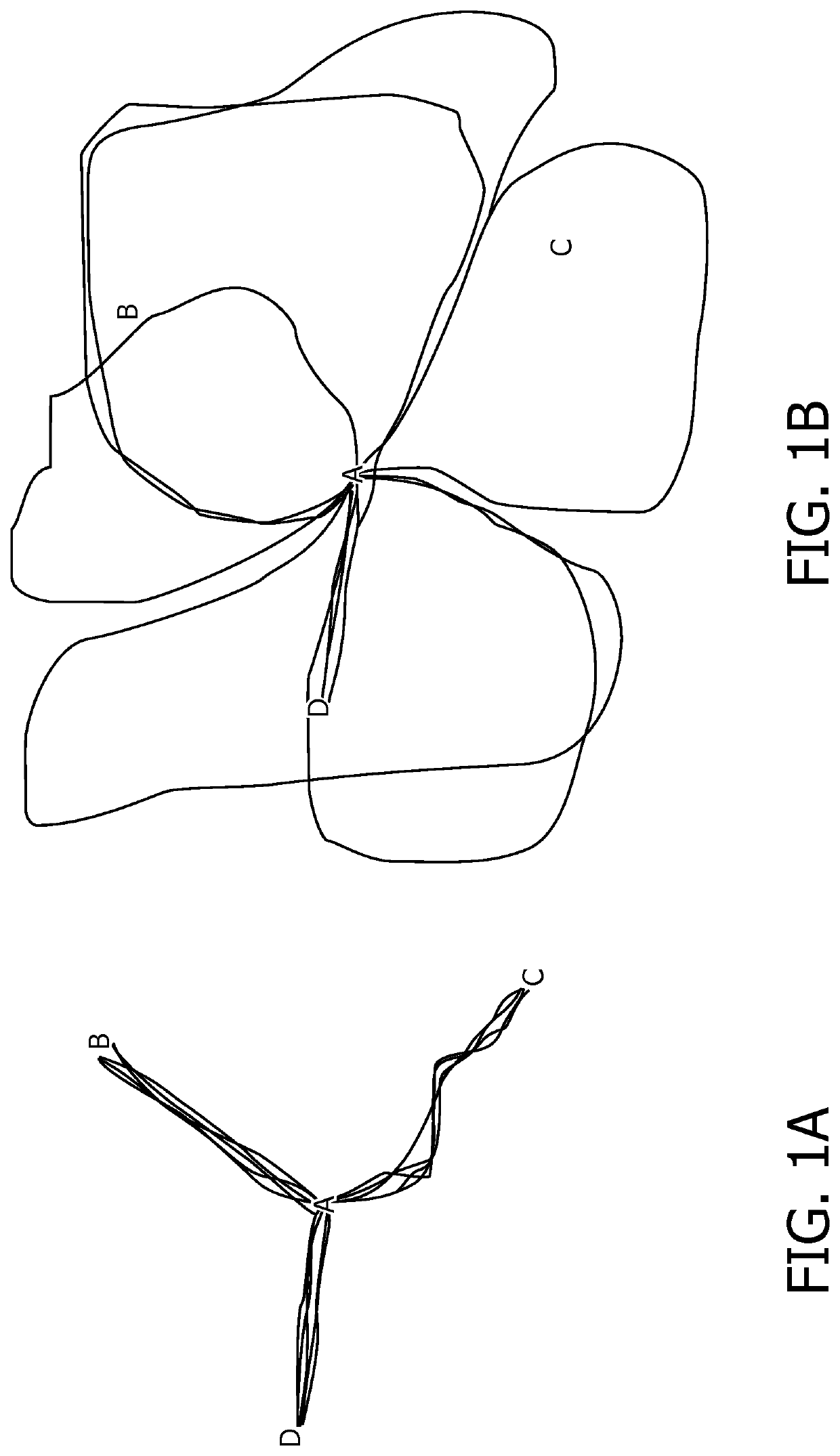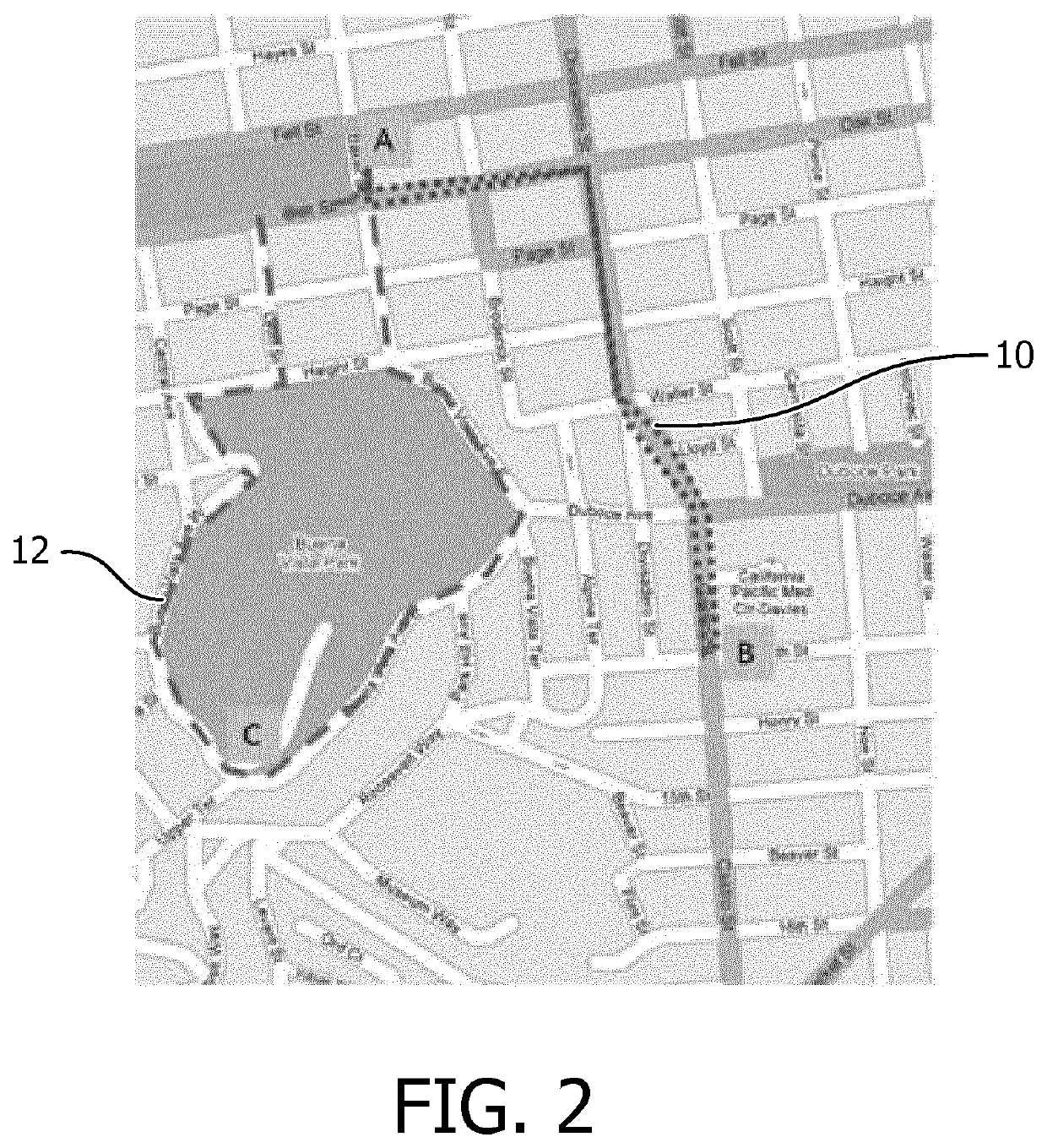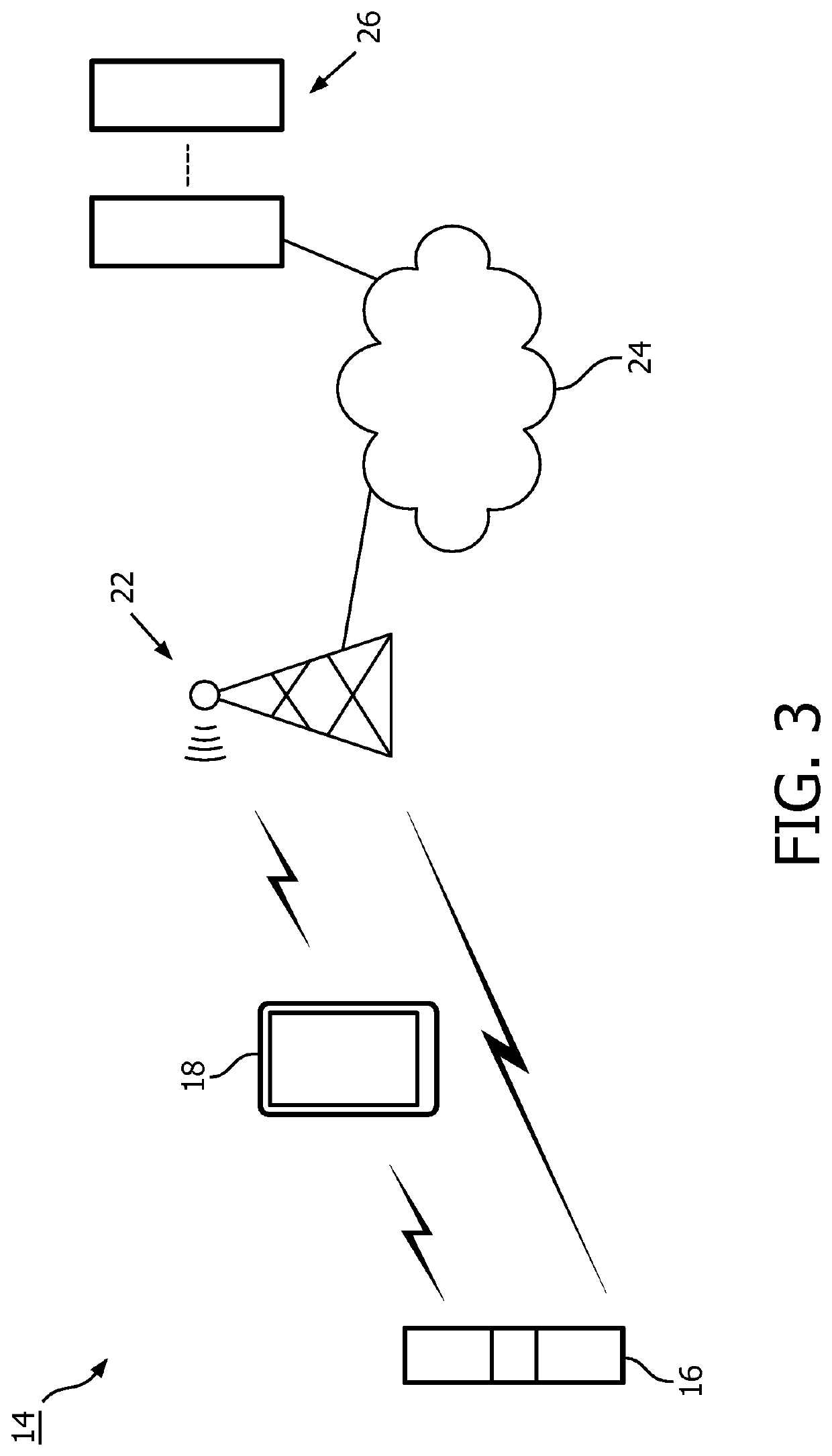Ambulatory path geometric evaluation
a geometrie and ambulatory path technology, applied in the field of context-based activity monitoring, to achieve the effect of less computational effort and helpful feedback
- Summary
- Abstract
- Description
- Claims
- Application Information
AI Technical Summary
Benefits of technology
Problems solved by technology
Method used
Image
Examples
Embodiment Construction
[0026]Disclosed herein are certain embodiments of a geometric evaluation system, apparatus, and method (herein, also collectively referred to as a geometric evaluation system) that may provide a user with contextual intelligence to assist a user in a given task. Certain embodiments of a geometric evaluation system are related to health self-management and, especially, digital support for a user to become physically more active in daily life. Also, certain embodiments of a geometric evaluation system can be used for automatic assessment of mental and cognitive state of a subject. For instance, in the area of health management, a geometric evaluation system can address a problem of less effective coaching due to unknown purpose of activity by providing a method for identifying whether the activity is utilitarian or health-related, while in the process, reduce computational requirements of existing activity monitoring systems and / or provide an improvement in accuracy of systems or devi...
PUM
 Login to View More
Login to View More Abstract
Description
Claims
Application Information
 Login to View More
Login to View More - R&D
- Intellectual Property
- Life Sciences
- Materials
- Tech Scout
- Unparalleled Data Quality
- Higher Quality Content
- 60% Fewer Hallucinations
Browse by: Latest US Patents, China's latest patents, Technical Efficacy Thesaurus, Application Domain, Technology Topic, Popular Technical Reports.
© 2025 PatSnap. All rights reserved.Legal|Privacy policy|Modern Slavery Act Transparency Statement|Sitemap|About US| Contact US: help@patsnap.com



